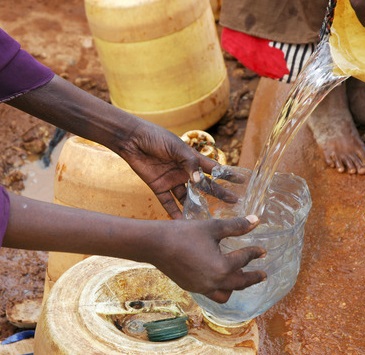Kenya bores down to water wealth

Scientist have struck a find more valuable to life than gold or any other resource, indentifying previously-unknown aquifers under the Turkana region of Kenya, using radar and satellite exploration technologies.
Studies funded by the United Nations found Turkana hosts a minimum reserve of 250 billion cubic metres of water, which is provided by the rainfalls of the Kenyan and Ugandan highlands at a rate of 3.4 billion cubic metres per year. The massive body of water swells Kenya's share of available supplies by 17%; virtually doubling the amount of water Kenyans consume today.
Drilling has been conducted to confirm the electronic imagery. Holes were bored to prove the existence of the large Lotikipi Basin Aquifer. It is estimated to store 207 billion cubic metres of water, the same volume of the nearby Lake Turkana. Early studies say the aquifer replenishes at a rate of 1.2 billion cubic metres a year. Its cousin is the Lodwar Basin Aquifer, situated within a short distance of Lodwar town and Turkana’s oil reserves. It is fed by the perennial Turkwel River and has an estimated reserve of 10 billion cubic metres.
The exciting news goes further, with reports three other large structures – Gatome, Kachoda and Nakalale –could prove to store a combined 30 billion cubic metres of water still to be confirmed by drilling.
A full sheet of facts and figures is available here, as well as the detailed report to UNESCO.








 Print
Print